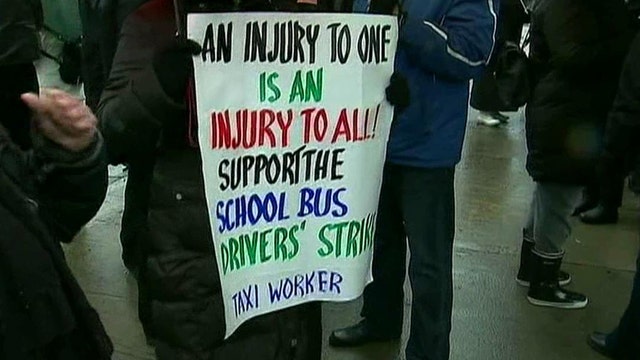The nation's labor unions suffered sharp declines in membership last year, the Bureau of Labor Statistics said Wednesday, led by losses in the public sector as cash-strapped state and local governments laid off workers and -- in some cases -- limited collective bargaining rights.
The union membership rate fell from 11.8 percent to 11.3 percent of all workers, the lowest level since the 1930s.
Total membership fell by about 400,000 workers to 14.4 million. More than half the loss -- about 234,000 -- came from government workers including teachers, firefighters and public administrators.
The losses add another blow to a labor movement already stretched thin by fighting efforts in states like Wisconsin, Indiana and Michigan to curb bargaining rights and weaken union clout.
But unions also saw losses in the private sector, even as the economy expanded modestly. That rate fell of membership fell from 6.9 percent to 6.6 percent, a troubling sign for the future of organized labor, as job growth has generally taken place at nonunion firms.
"To employers, it's going to look like the labor movement is ready for a knockout punch," said Gary Chaison, professor of industrial relations at Clark University in Worcester, Mass. "You can't be a movement and get smaller."
Unions have steadily lost members since their peak in the 1950s, when about one of every three workers was in a union. By 1983, roughly 20 percent of American workers were union members.
Losses in the public sector are hitting unions particularly hard since that has been one of the few areas where membership was growing over the past two decades. About 51 percent of union members work in government, where until recently, there had been little resistance to union organizing.
That began to change when Wisconsin Gov. Scott Walker signed a law in 2011 eliminating most union rights for government workers. The state lost about 46,000 union members last year, mostly in the public sector.
Union officials blame losses on the lingering effects of the recession, as well as GOP governors and state lawmakers who have sought to weaken union rights.
"Our still-struggling economy, weak laws and political as well as ideological assaults have taken a toll on union membership, and in the process have also imperiled economic security and good, middle class jobs," said AFL-CIO President Richard Trumka.
In Indiana, where a new right-to-work law took effect last March, the state lost about 56,000 union members. The law prohibits unions from requiring workers to pay union fees, even if they benefit from a collective bargaining agreement. Michigan lawmakers approved a similar measure in December.
Another problem for unions is an aging membership that is not being replaced by younger members. By age, the union membership rate was highest among workers ages 55 to 64 (14.9 percent) and lowest among those ages 16 to 24 (4.2 percent).
In New York, the state with the highest union density, nearly one-quarter of the workforce belonged to a union. North Carolina had the lowest at 2.9 percent.
Among full-time wage and salary workers, union members in 2012 had median weekly earnings of $943, while those who were not union members earned $742.





